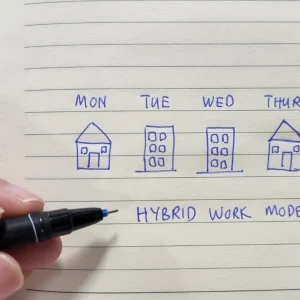
They say that time waits for no man, and the same could probably be said about technology. The pace of technological achievement is so great that even staying on top of the latest trend or acronym can be a challenge. However, regardless of whether your interest in technology is personal or professional, there is one trend which you ought to really get to know – Machine-to-Machine (M2M). This technological development isn’t just hype either. You might be surprised to learn that M2M is already a $24bn (£14.9bn) market and predicted to reach nearly $86bn by 2017. M2M is happening, and it’s happening now.
The Internet of Things
Also known as the ‘Internet of Things’, M2M is now one of the quickest growing regions in the technology landscape. So how does it work?
Think of any sort of device which might have a sensor or software agent inside it. M2M solutions can connect millions of these devices together via a network, allowing them to report device-specific information back to other appliances or applications. Good examples could be vehicles, fridges, vending machines, pace-makers and even buildings. M2M will have a pivotal place at the heart of the city of the future.
The beauty of an M2M network is in its versatility. Firstly, a sensor or other type of device is set up to monitor for activity or a change in status, such as increased levels of radiation (in a nuclear reactor, for example) or decreasing levels of cheese and onion crisps (in a vending machine). The captured data is then sent via an IP network (e.g. LAN, WAN, hybrid) to another device or application, which analyses the event and can take appropriate action. It’s the communication between machines like this which gives M2M its name.
What’s really interesting here is the potential to develop machines that are more aware than ever before about the world around them. Not only can M2M solutions create specific tasks based on real world data, but they can also execute complex instructions without the need for human intervention. And, although it sounds like something straight out of a Sci-Fi film, M2M will be a real game-changer for both individuals and businesses.
From connected homes to connected hearts
Technology is all about making our lives easier or better in some way, and M2M promises to do just that. To take a couple of examples, M2M will mean a much welcome end to the infinite drudgery of the weekly grocery shop. Running low on milk? The internal inventory control system in your refrigerator would recognise that and automatically reorder supplies from your local supermarket. Furthermore, how about a heart-sensor which can recognise the signs of an imminent heart attack and request medical assistance? Thanks to M2M, this type of life-saving service is already available today.
Productivity gains and cost efficiencies have been early drivers in the adoption of M2M solutions. Many of the heavy service based industries are seeing dramatic reductions in service costs because what was once done on-site, can now be done remotely. As a result, those requisite on-site visits (think power stations, oil rigs and remote weather stations) actually become more efficient thanks to M2M technology, since technicians can often diagnose the problem before they even arrive.
The road to a ‘smarter’ future
While numerous industry-specific M2M solutions are already emerging in the market, businesses should first identify how M2M can enhance their own processes or even enable the introduction of new services before jumping in headfirst. Of course, until the market is sufficiently developed, some companies may have to rely on service providers to customise solutions to meet their requirements. For example, most large communications companies have established, or are in the process of establishing comprehensive M2M business services.
Lastly, M2M will offer no relief from the huge amounts of data that we have been talking about for some years now. While, for the most part, big data has so far been human-generated, the impact of machine data generated from M2M solutions will be huge. So, selecting the right M2M analytic applications will be pivotal in order to ensure the vast volumes of data are useful, and not a hindrance.
However, for the moment, let’s enjoy the many ways that M2M is already improving our lives, and the huge potential for it to do so in the future.






